Updates: Introducing smart location search, TLS data, public profiles, & more
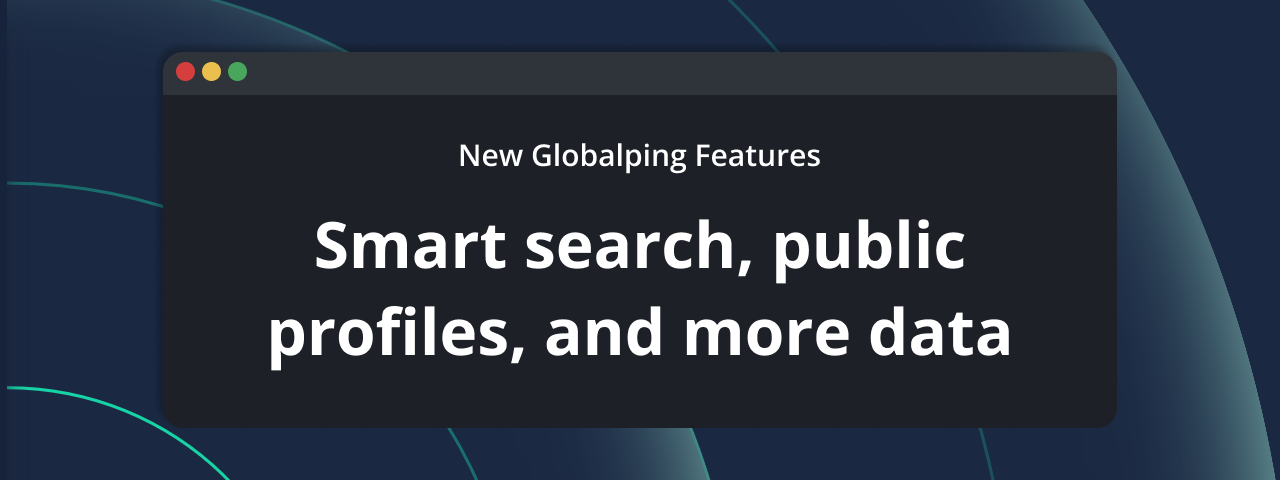
April has just begun, and we're super happy to share the improvements and new features we've implemented on the Globalping platform, along with its tools and integrations.
In this blog post, we'll explore all updates, where to find them, how to use them, and how they can help you with your daily networking tasks.
Here's an overview of all the changes we'll look at:
- The location field in our website tool now provides location suggestions as you type.
- HTTP results in our website tool now display TLS details.
- In the dashboard, you can set probes to be public. This automatically tags and displays them on a public profile page under your username.
- Globalping now diversifies probe ASNs in measurements to reduce bias from popular providers.
- We've improved the UI and functionality of the probe adoption process in the dashboard to be more user-friendly.
Let's look at these updates in detail:
Smart location search
Previously, the location field in our website tool was a simple text input where you could enter your desired probe locations.
However, many users may not be aware of the full range of data they can provide: geographical locations such as countries or cities, as well as ASNs, networks, tags, and more.
We've upgraded this field to an auto-suggest search to help users discover and fully leverage Globalping's magic location field. Now, as you type, you'll get a list of relevant suggestions alongside the number of currently active probes in each location.
For example, typing a couple of letters will present you with a list of suggestions:
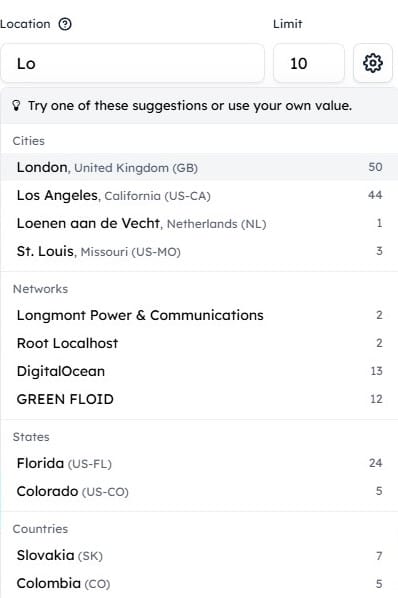
When using the plus sign + to create a filter, the location field will display valid locations available for your filter:
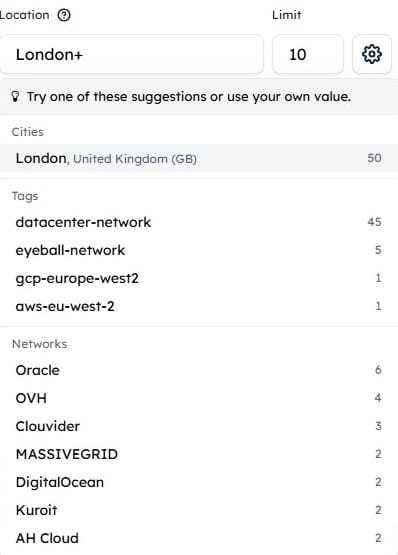
This enhancement will make exploring different types of locations more straightforward than ever. Plus, it helps to prevent defining non-existent places because of typos.
TLS details for HTTP
Some time ago, we added TLS data to measurement results from integrations like our CLI tool. However, until recently, this information wasn't available for results in the website tool.
Now, when you create an HTTP test on our website, you'll see a "TLS details" button in your results. By clicking this button, you can access important TLS information, including the issuer and validity of the certificate.

We're eager to provide a consistent experience with Globalping for everyone, no matter what tools or integrations you prefer to use! And this update is a step we needed to take to make that happen.
Make your probes public
Since last year, you have been able to adopt your Globalping probes through the Globalping Dashboard. You can add custom tags to each of your probes, which makes it easier to target them in your measurements or share them with others so they can do the same. However, this process can become repetitive and time-consuming for users with multiple probes.
You now have the option to make all your probes public, which will automatically tag them with your username and display them on a public profile page like this one:
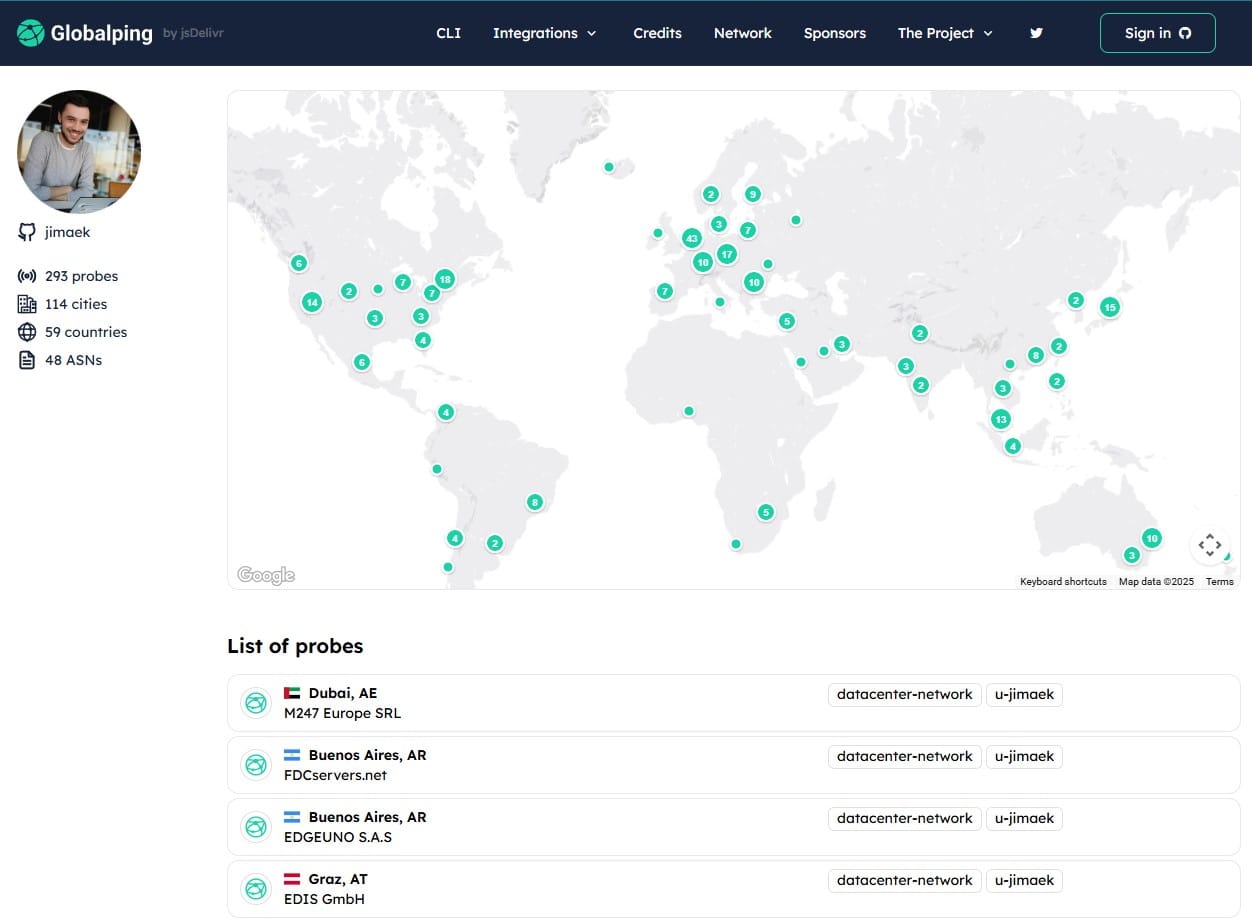
By default, this feature is disabled, meaning your probes are private.
To make your probes public:
- Go to Settings in the Globalping Dashboard
- Navigate to the Privacy section and enable "Make probes public"

With this update, you no longer need to tag your probes individually to target them (you can still do that, though), saving you time and effort. Plus, when you are logged in, your probes will be highlighted in the CLI results, making them easy to spot. You can also share the link to your profile page on your website, social media, or directly with others, allowing them to use your probes and support Globalping by spreading the word.
Diversified probe ASNs
Before, measurement results from certain countries were often dominated by probes hosted with popular providers. For example, if a user ran ping from a probe in Europe, Germany, or France, there was a high chance that results would come from different probes from the same data centers, skewing the data.
To address this, we now diversify probe ASNs within a single measurement when limit > 1. If you're interested in how we solved this challenge, check out this GitHub issue.
This update makes sure that you get more accurate and representative network data, reducing bias from popular providers.
Improved the probe adoption flow
As the Globalping Dashboard is relatively new, we're continuously working to improve its UI and functionality for a great user experience. A big part of the dashboard is the probe adoption flow, which we want to be as straightforward as possible.
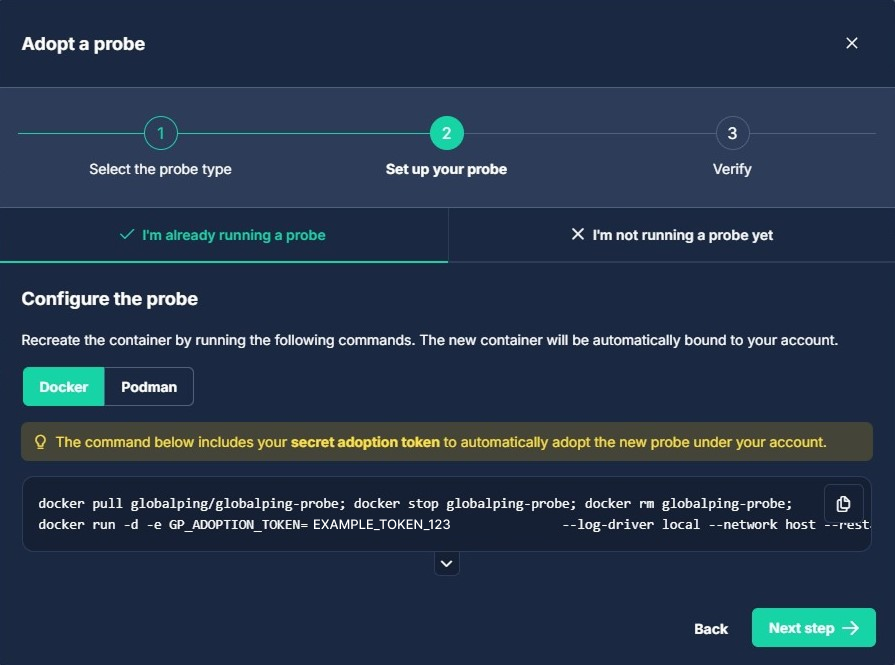
To this end, we've implemented some improvements:
- We've updated the UI to be more user-friendly and intuitive.
- We've streamlined the Docker probe adoption process, so the adoption token is now included directly in the Docker command.
Conclusion
As you can see from the list of updates, we are committed to improving Globalping along with its tools and integrations – we want to make sure that you have a great experience, no matter your technical background.
Do you have any feedback or a feature request? Create an issue on GitHub to let us know!